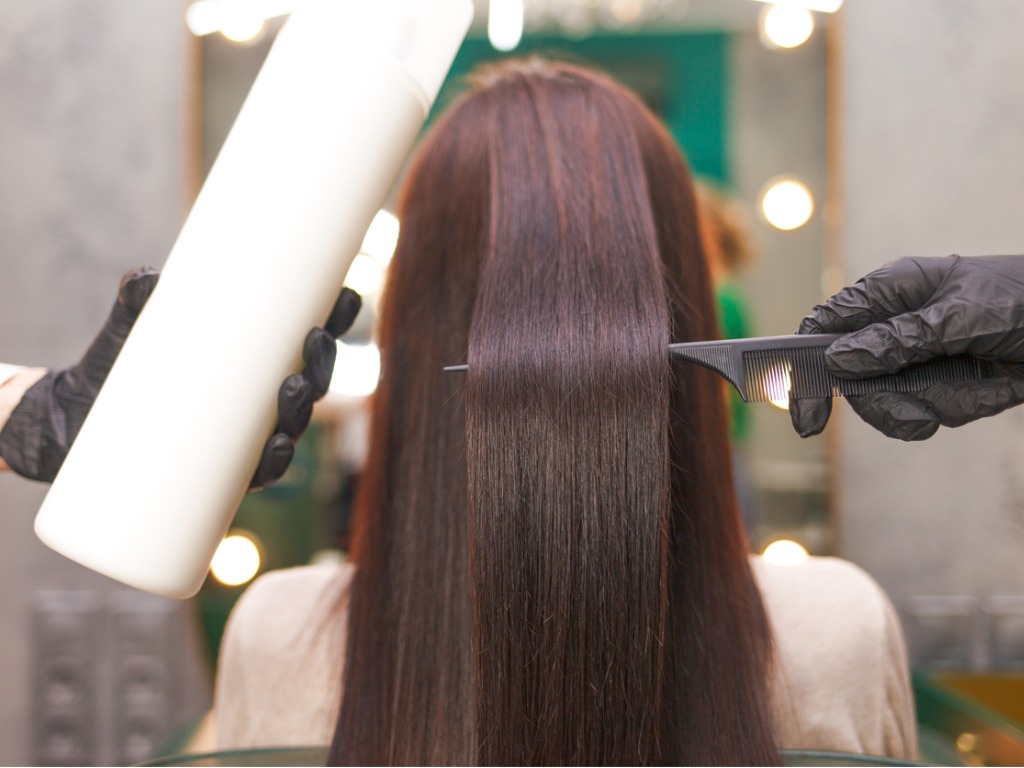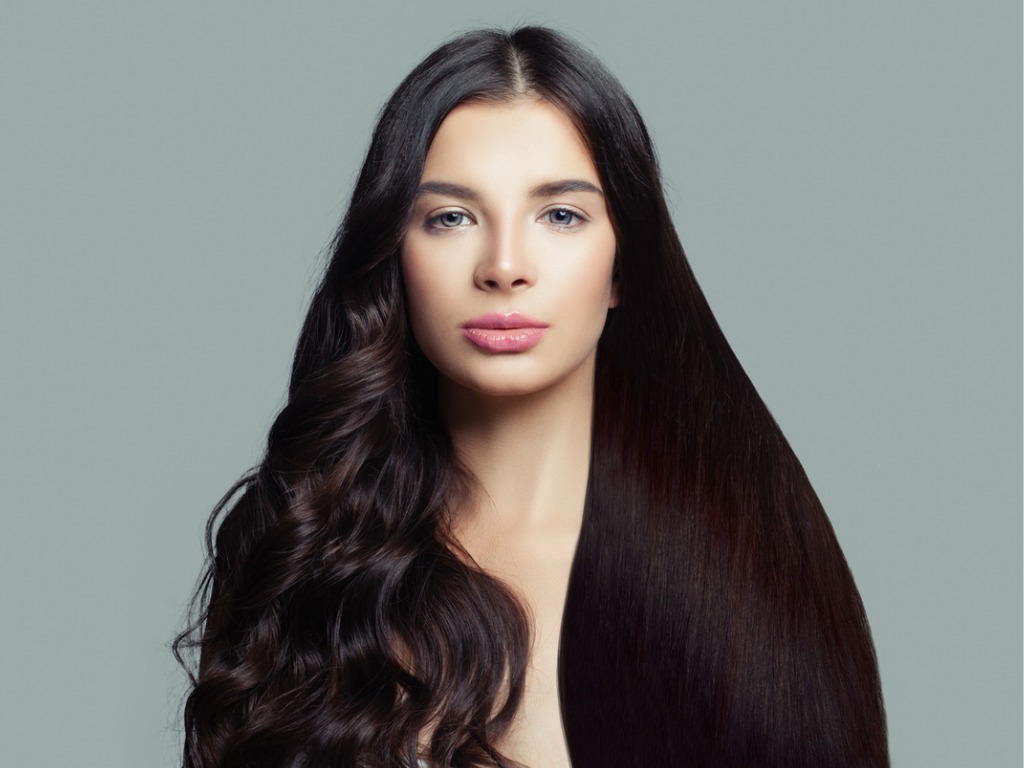Are Chemical Hair Straighteners Safe?

The Bottom Line
Some hair-straightening products contain formaldehyde, a chemical that has been associated with short-term and long-term health problems. The Food and Drug Administration (FDA) is currently considering banning formaldehyde-based hair-straightening products because of safety concerns.

What is a Brazilian blowout?
A Brazilian blowout is a type of hair treatment that is used to straighten naturally curly or frizzy hair. It is semi-permanent, meaning the hair will stay straight for about three months. It is done by sealing a liquid solution that contains keratin and formaldehyde or a formaldehyde-like chemical into the hair with a hot iron. It is called a Brazilian blowout because the type of keratin treatment originated there.
Are Brazilian blowouts safe?
Formaldehyde and chemicals that are derivatives of formaldehyde have been associated with short-term and long-term health problems. People who are sensitive to formaldehyde may develop skin irritation, rashes, and facial swelling. Some people can even have trouble breathing. While a single Brazilian blowout probably will not cause long-term health effects, people who get blowouts regularly over long periods of time and stylists who work with the chemicals chronically may develop problems.
Why is the FDA considering banning some chemical hair straighteners?
Formaldehyde and similar chemicals can cause health problems. Their use as hair straighteners has been banned in other countries because of these concerns. During application, formaldehyde can cause irritation of the skin, eyes, nose, and airways. This can happen to both the person getting the hair treatment and the stylist. Long-term or repeated exposure to formaldehyde has been associated with certain types of cancer. Currently, the FDA is evaluating the data from relevant studies, but will also take into account information from product manufacturers and the general public. This process takes time, meaning it may be a while before a final decision is made about chemical hair straightener bans.
Do hair-smoothing chemicals cause cancer?
While we do not have enough information to say with certainty if the formaldehyde is the cause of the cancer, we do know that people who are exposed to formaldehyde repeatedly over time are more likely to develop certain types of cancer. This includes nasal cancers, leukemia, breast cancer, ovarian cancer, and uterine cancer. We also know that there is an increased risk in Black and Latina women, possibly because of the increased use of formaldehyde containing products to straighten hair.
Is formaldehyde poisonous?
People with allergies and asthma are more sensitive to the irritating effects of formaldehyde in hair straighteners. People who are repeatedly exposed to formaldehyde are also at risk for long-term problems. The risk also depends on the amount people inhale and the frequency. Formaldehyde is poisonous if swallowed.
What should I do if I have been exposed to formaldehyde or formaldehyde-releasing products?
If someone drinks hair-straightener solution, has skin irritation, or has questions about how to use these products safely, expert help is available through the webPOISONCONTROL online tool at www.poison.org and by phone at 1-800-222-1222. Poison Control guidance is always free, confidential, and available 24 hours a day.
Maryann Amirshahi, PharmD, MD, MPH, PhD
Medical Toxicologist
Poisoned?
Call 1-800-222-1222 or
Prevention Tips
- Keep hair-straightening chemicals away from children because they are toxic if swallowed.
- Consider using a formaldehyde-free hair-straightening product.
- Stylists should follow work place safety protocols.
- Use protective equipment when applying hair-straightening products. This can include goggles, gloves and a mask.
- If you get any solution where it does not belong, wash it off immediately.
- Do not get Brazilian blowouts if you have had a reaction to the chemicals in the past, as the reaction may recur.
This Really Happened
Case #1: A 26-year-old hair stylist started having wheezing and cough at work, which she noticed was worse when she was doing Brazilian blowouts. Her symptoms were worse during the week and resolved on weekends. She went to her doctor and was diagnosed with occupational asthma which was caused by sensitivity to formaldehyde fumes. She was given an inhaler and stopped doing Brazilian blowouts and her symptoms resolved.
Case # 2: A 48-year-old woman got a Brazilian blowout, which she had done in the past. After leaving the salon, the skin around her neck broke out in a red, itchy rash. She was treated with antihistamines and topical steroids. The rash went away after a week of treatment. The same thing happened three months later when she went back for another blowout. Her doctor was concerned she had developed a sensitivity to the chemicals in the solution and she decided to stop getting hair-straightening treatments.
References
Poisoned?
Call 1-800-222-1222 or
Prevention Tips
- Keep hair-straightening chemicals away from children because they are toxic if swallowed.
- Consider using a formaldehyde-free hair-straightening product.
- Stylists should follow work place safety protocols.
- Use protective equipment when applying hair-straightening products. This can include goggles, gloves and a mask.
- If you get any solution where it does not belong, wash it off immediately.
- Do not get Brazilian blowouts if you have had a reaction to the chemicals in the past, as the reaction may recur.
This Really Happened
Case #1: A 26-year-old hair stylist started having wheezing and cough at work, which she noticed was worse when she was doing Brazilian blowouts. Her symptoms were worse during the week and resolved on weekends. She went to her doctor and was diagnosed with occupational asthma which was caused by sensitivity to formaldehyde fumes. She was given an inhaler and stopped doing Brazilian blowouts and her symptoms resolved.
Case # 2: A 48-year-old woman got a Brazilian blowout, which she had done in the past. After leaving the salon, the skin around her neck broke out in a red, itchy rash. She was treated with antihistamines and topical steroids. The rash went away after a week of treatment. The same thing happened three months later when she went back for another blowout. Her doctor was concerned she had developed a sensitivity to the chemicals in the solution and she decided to stop getting hair-straightening treatments.
